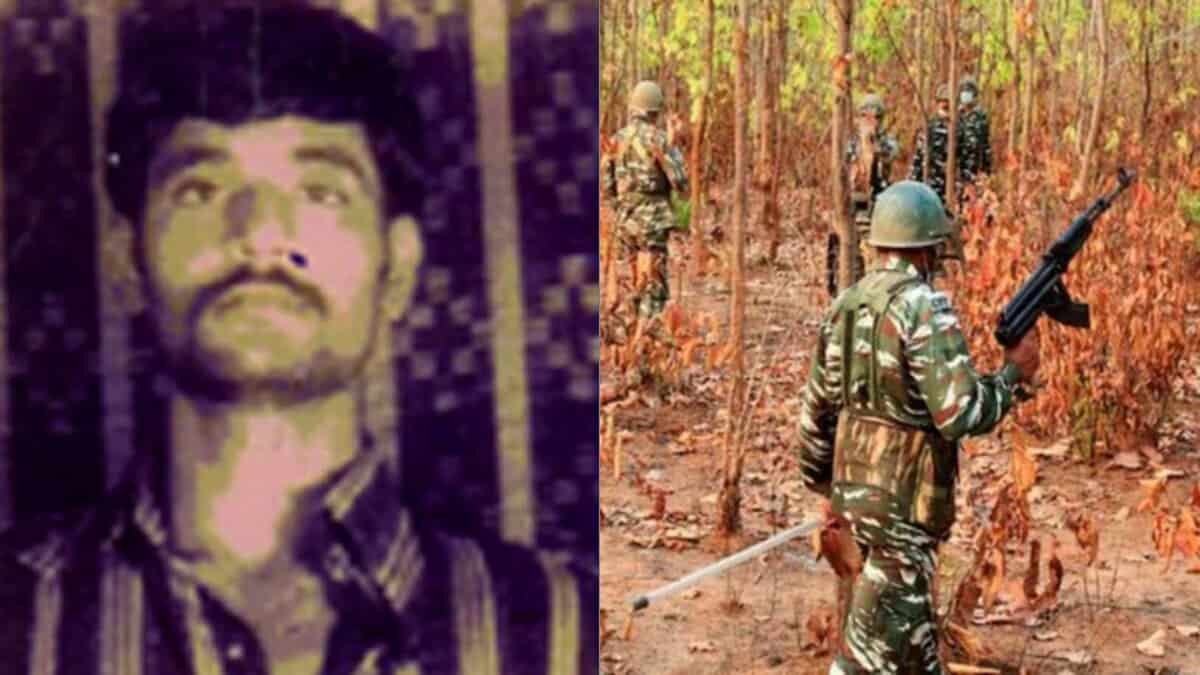
Hyderabad: It was a paradox that the CPI (Maoist) suffered its biggest blow this month – losing general secretary Nambala Kesava Rao and 70 other comrades in encounters – when the party should have actually been celebrating the anniversary of Naxalbari movement, considered the mother of all Naxalite groups.
The encounters have continued unabated for over a year, the latest one having taken place in Palamu district of Jharkhand where a top Maoist commander Tulsi Bhuinya was shot dead on Tuesday (May 27). It was just six days earlier on May 21 that Kesava Rao fell to the bullets of security forces.
In the face of the series of encounters under “Operation Kagar” of the Central government, the CPI (Maoist) has offered peace talks with the party’s official spokesman Abhay twice putting forward the proposal. Not only has the Centre rejected the proposal but launched a manhunt earlier this month in ‘Karreguttalu’ (black hills) of Bijapur district which was a safe zone of Maoists in Chhattisgarh – Telangana border. Now, the security forces have inflicted another major setback to the party in Narayanpur district of Chhattisgarh which led to the killing of Kesava Rao and 26 others.
Retreating to ‘safe zone’
Seeing the writing on the wall much earlier, the Central Committee of the party was said to have asked its leaders and cadre to retreat from the ‘war zone’ to ‘safe zone’. Yet, the party has steadily seen erosion in its leadership with encounter killings.
Documents of the party recovered by police indicate that there were 21 Central Committee and 13 Politburo members of the party in September last year. Many of them were from the Dandakaranya Special Zonal Committee (DKSZC) which looked after party activities in Chhattisgarh, Odisha and parts of Madhya Pradesh. Eighteen members of DKSZC and another 120 members of sub-committees died in encounters as part of Operation Kagar. As a result, DKSZ was almost rudderless, police sources said.
Also, the Andhra Odisha Border (AOB) committee had become dysfunctional though it had 18 members. In Kerala, where the party had some organisational strength, two of its State committee members were killed in encounters last year. There were no armed squads of CPI (Maoist) in Andhra Pradesh and Telangana, once a hotbed of Naxalite activity.
Operation Kagar
The ‘Operation Kagar’ was a higher level military operation using ultra-modern unmanned and noiseless drones that could detect movement of men and material and tip off the forces with precise geographical location. They covered 18 to 25 square kilometers on their flight over challenging terrain, making the task of forces much easier. They replaced traditional drones that were shot down by the Maoists in the forest. On the other hand, the Maoists continued with their outdated dependence on shelters in the forest, moving on foot.
The encounters at Karreguttalu and Narayanpur were clearly a sign of victory to the para-military forces much ahead of the expiry of ‘Operation Kagar’ on March 31 next year as they accounted for the lives of over 500 party activists, including its supremo. The operation also restricted the number of most affected districts to six from nearly a hundred a decade ago. The casualties were in sharp contrast to 80 per year in ‘Greenhunt’ of the previous United Progressive Alliance (UPA) government at the Centre which also targeted left wing extremism.
Never in the history of the armed agrarian struggle launched by Charu Mazumdar at Naxalbari in Bengal on May 25, 1967, have there been so many deaths as now. Hundreds of revolutionaries like Kesava Rao were attracted to CPI (Marxist – Leninist) in the initial years of its formation under the leadership of Mazumdar in 1968. The movement spread to Srikakulam and Jagtial in the erstwhile Andhra Pradesh.
Following a fight at the mess in the Regional Engineering College (REC) at Warangal which left one student dead when he was pursuing his M. Tech in 1975, Kesava Rao dropped out of the course and went underground under the cover of shielding himself from the black days of Emergency. He was an active member of the Radical Students Union (RSU) which was affiliated to the CPI (ML) in the college. Thereafter, he joined the CPI (ML) as a full time member of the party.
Visiting home, getting arrested
On a visit to his home at Jiyannapet village in Kotabommali mandal of Srikakulam district to help his family in agriculture, the police confronted him but he escaped into nearby hills. He was, however, arrested in the forest of Chintapalli in Visakhapatnam district and sent to the Central Jail in the district headquarters town. On release from jail on bail, Kesava Rao never looked back to return home and spent 45 years underground working with the CPI (ML) and then the People’s War and Maoist party.
With the death of Charu Mazumdar in police custody in 1972, Kondapalli Sitaramaiah who was a Hindi teacher at a school in Warangal took over the mantle of heading the Central Organising Committee of CPI (ML) and later floated the People’s War (PW) in 1980.
Initially, Kesava Rao worked in the name of Ganganna as a member of the East Godavari district committee of CPI (ML). He went by the name Basavaraju when he became the State committee member of the party. He was popular by the latter name throughout his career as a Naxalite.
Joining the PW during its inception, Kesava Rao soon became a top leader in the party and was said to have undergone training in guerilla warfare at the hands of Liberation Tigers of Tamil Eelam (LTTE) militants in the forest of Bastar in Chhattisgarh in 1987. He was said to have led the attack by PW on a police party at Daragadda in East Godavari district of Andhra Pradesh, killing six uniformed men, in the same year. He was the brain behind the Claymore mine attack on former Chief Minister N. Chandrababu Naidu at Alipiri near Tirupati in 2003.
Rising in hierarchy
He was promoted as the Central Committee member of PW in 1992 and functioned as the secretary of the Central Military Commission of the party in 2000-04 when PW merged with MCC to become CPI (Maoist) and Muppala Laxman alias Ganapathi helmed the outfit. He continued in the role with the additional responsibility of establishing the ‘Red Corridor’ of CPI (Maoist) in 16 States on his elevation as the chief of the military commission while playing a key role as the military strategist of the party.
He led the raid by Maoists on the arms and ammunition store of the police at Nayagadh in Odisha in 2008. The raid resulted in Maoists carrying away over 1,000 weapons. He also led the landmine attack at Dantewada in Chhattisgarh in 2010 which led to the death of 76 personnel of Central Reserve Police Force (CRPF).
Kesava Rao took over from Laxman Rao as the general secretary in 2018 but his word was already final in all matters of military operations of CPI (Maoist).
Indiscriminate killing
Barring Kesava Rao, a Central Committee member Chalapati and a key leader Ramji, the killings in CPI (Maoist) regime were indiscriminate and numerically high where the victims were mostly lower rung leaders or cadres. Whereas, in the PW, several State committee leaders were killed in encounters aimed at selective leaders. The police killed PW State committee secretary Puli Anjaiah and another senior leader Madhav in operations with the elite Greyhounds force in the combined State of Andhra Pradesh. PW Central Committee members Nalla Adi Reddy, Erramreddy Santosh Reddy and Seelam Naresh were gunned down in December 1999.
Operation Greenhunt
Post merger of PW with MCC to form CPI (Maoist) in 2004, the Centre launched ‘Operation Greenhunt’ in 2009 which resulted in the killing of Central Committee and Politburo members in encounters, including Cherukuri Rajkumar alias Azad, Mallojula Koteswara Rao alias Kishanji, Patel Sudhakar Reddy alias Suryam and Sakhamuri Appa Rao.
Telangana State committee member Haribhushan and Adi Reddy’s wife Sarojini died of COVID which also threatened CPI (Maoist).
The DKSZC in a press release said Kesava Rao was caught unarmed and killed in a fake encounter. It said the victim was within the cordon of tight security by his guards. But, the security was disintegrated due to heavy shelling by security forces. Kesava Rao was asked by his guards to escape but he stood his ground. That was when he was nabbed.




